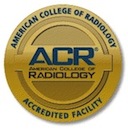Ultrasound
Ultrasound is a typically painless medical test that helps your doctor to diagnose and treat certain medical conditions. Unlike X-rays which use radiation, ultrasound exams use reflected sound waves to examine areas of the body. Because there is no radiation exposure, ultrasound is the preferred imaging technique for pregnant mothers and their unborn infants.
Ultrasound is excellent for evaluating many specific areas of the body and is especially effective for examining interior body cavities like the abdomen. The ultrasound scanner consists of a console which contains a computer, video display screen and a small hand-held device called a transducer that is used to scan your body. The transducer sends out a sound wave and then listens for the echo or return wave. Images are immediately visible on the video display screen.
Our imaging centers offer several types of ultrasound exams including: echocardiography, abdominal, pelvic, transvaginal, scrotum, thyroid and musculoskeletal. Vascular ultrasound exams include abdominal and peripheral venous and arterial studies.
No known risks or harmful side effects are posed to humans from ultrasound examinations.
Your doctor will be able to give you additional details about these exams, but a general idea of what to expect is provided below.
Preparation
Preparation for your ultrasound exam is determined by the part of your body to be examined.
The scanner does not confine, enclose, surround or rotate around your body and the exam requires no contrast medium or dye.
You should wear comfortable, loose-fitting clothing for your ultrasound exam.
You will be asked to remove all clothing and jewelry from the area of your body being examined prior to the exam as these objects interfere with the quality of the images.
The portion of your body that is being examined will be undressed and you may be asked to wear a hospital gown to cover yourself during the exam.
For abdominal, aorta, kidneys, liver, gallbladder, spleen and pancreas ultrasound exams - Do not eat or drink for at least 8 hours prior to your exam. This includes mints and chewing gum. During this 8 hour period you may continue to take regular medications but only with small sips of water.
For pediatric ultrasound exams - Fasting time is dependent upon the child's age. Consult your doctor for additional information.
For pelvic ultrasound exams - Empty your bladder approximately 1 to 1 ½ hours prior to your exam, and then drink 32 ounces of liquid of your choice. Your bladder should be full for the exam. Do not empty your bladder again until the exam has been completed. You may continue to take regular medications.
Exam
The exam is usually completed within 30 to 60 minutes.
Our technologist will prepare and guide you by explaining the procedure, and positioning you to ensure the highest quality images are obtained from your exam.
After being positioned on a comfortable table, the sonographer will apply some warm gel to your skin. The gel creates a secure contact to eliminate air pockets between your body and the transducer.
The sonographer then presses the transducer against your body moving it back and forth over the area of interest until the desired images have been captured.
Once your exam is complete, the gel will be wiped off your skin and the sonographer will guide you out of the examination room.
Results
When your exam is complete you may leave and resume your regular activities.
A radiologist will review your exam images and report the findings to your doctor within 24 hours. Your doctor will then discuss the findings and next steps with you.




